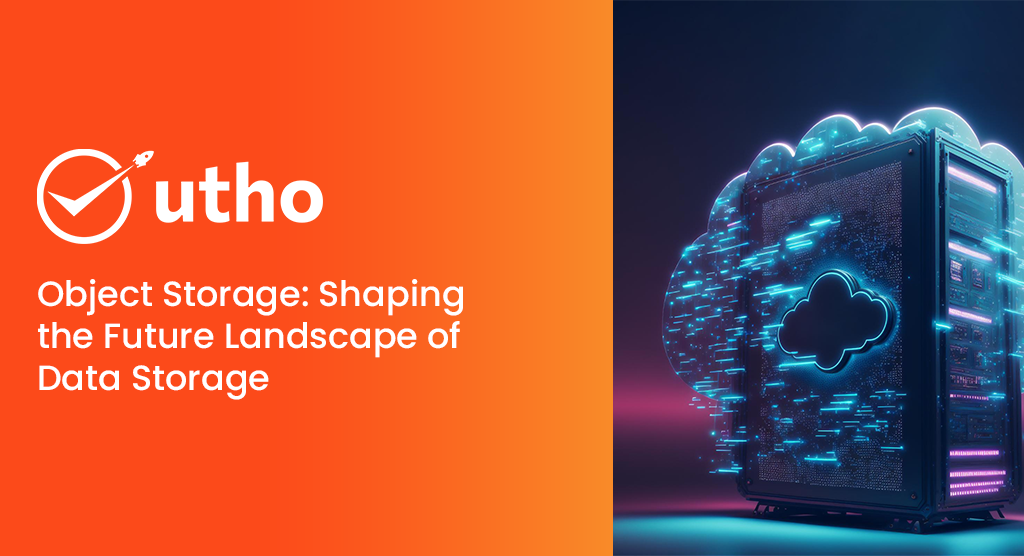Presently, numerous enterprises face challenges related to intricate and disorganized data storage, impeding their business expansion. Businesses are tasked with handling escalating data from diverse sources utilized across multiple applications and operational facets. In such scenarios, cloud object storage serves as a solution, offering a cost-effective data storage solution for diverse data types. It facilitates the storage of various objects such as video, audio, photos, static files, and more.
What does the term "Object storage" refer to?
Alternatively referred to as object-based storage, is an architectural framework for computer data storage specifically crafted to manage extensive volumes of unstructured data. Diverging from alternative architectures, it categorizes data into individual units, each accompanied by metadata and a distinctive identifier, facilitating the precise location and retrieval of each data unit.
What are the advantages it offers to corporates?
Leveraging object storage presents a multitude of primary advantages that cater to the dynamic and evolving landscape of modern data storage.
Massive scalability: The flat architecture of object storage allows for seamless scaling without encountering the constraints faced by file or block storage. With this technology, scalability is virtually limitless, enabling data to expand to exabytes effortlessly by incorporating new devices.
Reduced complexity: Object storage eliminates the need for folders or directories, streamlining the system by removing the complexity associated with hierarchical structures. The absence of intricate trees or partitions simplifies file retrieval, as there is no requirement to know the precise location.
Searchability: Metadata is integrated into objects, simplifying search and navigation without the necessity for a distinct application. This approach is notably more adaptable and customizable, allowing the tagging of objects with attributes and information, such as consumption, cost, and policies for automated processes like deletion, retention, and tiering.
Resiliency: Object storage has the capability to automatically replicate data, distributing it across various devices and geographical locations. This functionality serves to mitigate the impact of outages, fortify against data loss, and contribute to the implementation of effective disaster recovery strategies.
Cost efficiency: Object storage was designed with a focus on cost efficiency, offering storage for extensive data volumes at a more economical rate compared to file- and block-based systems. The cost structure of object storage is based on the actual capacity utilized, providing cost control benefits, particularly for substantial data storage requirements.
What are the use cases and examples of object storage?
It provides a diverse set of solutions that can be advantageous for an organization. Below are some typical examples and use cases.
Data archiving and backup: Object Storage is frequently employed for extended data retention due to its scalable capacity for storing substantial amounts of data and its high durability. This quality renders it well-suited for generating backups of critical data.
Media and entertainment: Object Storage is aptly designed for the storage and management of extensive sets of media files, including videos and music. Its capability to manage large file sizes, including 4K quality akin to Netflix standards, coupled with high data transfer rates, makes it particularly suitable for media file storage.
IoT and sensor data: Object Storage is commonly employed for the storage and administration of the extensive data generated by Internet of Things (IoT) devices and sensors. Its proficiency in managing high data volumes and meeting the requirement for swift data access aligns well with the prevalent characteristics of IoT applications.
Big data and analytics: Object Storage is ideally suited for the storage and administration of substantial volumes of unstructured data utilized in big data and analytics applications. Its scalability, enabling the storage of extensive data, coupled with its ability to provide rapid access when required for analysis, makes it well-matched for such applications.
What lies ahead for the future and applications of object storage?
The future prospects for the cloud Object Storage market appear optimistic. Factors such as the widespread adoption of cloud computing, the surge in unstructured data, and the demand for economical storage solutions contribute significantly to market expansion. Additionally, the anticipated surge in data from artificial intelligence (AI) and Internet of Things (IoT) technologies is poised to further propel the demand.
How has Utho's cloud storage solution fueled its market growth amid rising demand?
Utho's cloud object storage solution provides scalable and resilient storage for unstructured data. The company has experienced substantial market expansion attributed to the growing demand for cloud storage solutions.




